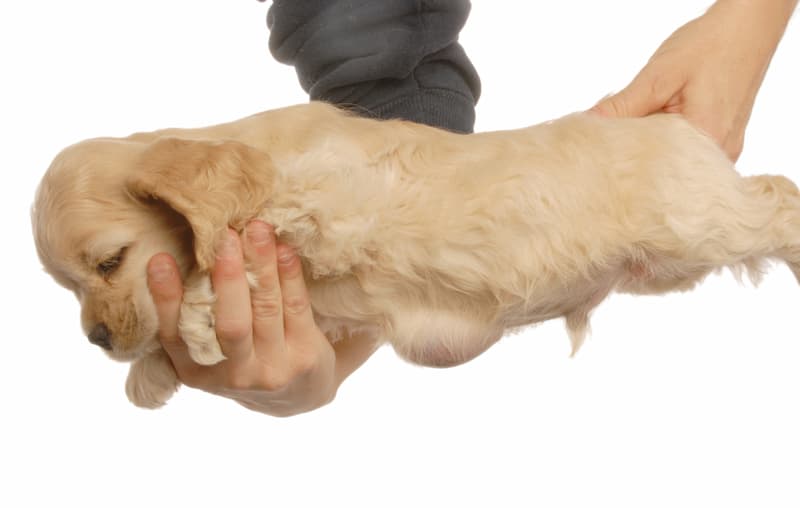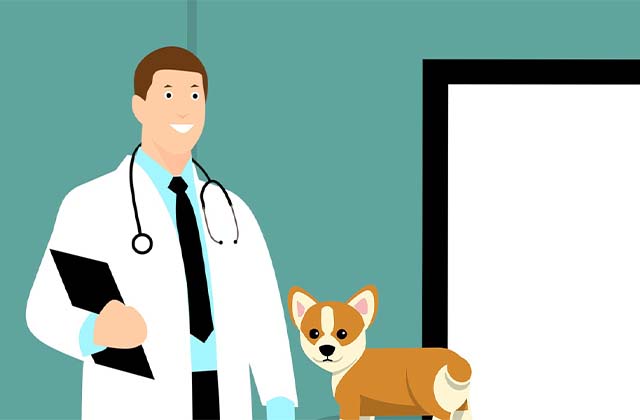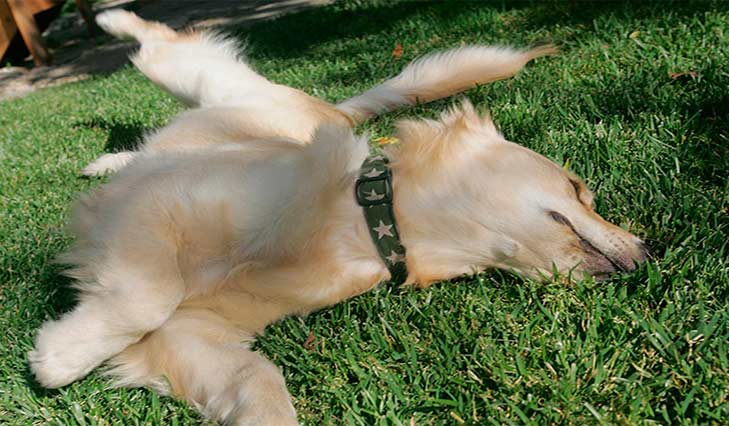
Should I Buy A Puppy With An Umbilical Hernia? It Depends…
To start with, should I buy a puppy with an umbilical hernia?
Being informed will help you decide whether or not to purchase a puppy that has an umbilical hernia. Make sure you are aware of the puppy’s condition’s seriousness and that you are equipped to handle the fallout.
If you are, feel free to welcome the small furry creature into your family as the newest member.
Please continue reading as I provide more in-depth details on should I purchase a puppy with an umbilical hernia.
Table of Contents
Buying A Puppy With An Umbilical Hernia
It’s likely an umbilical hernia if a puppy has one. The majority of the time, an umbilical hernia is a benign birth defect that can either be treated non-invasively or surgically.
Depending on the size of the hernia, an umbilical hernia can have varying effects on a puppy.
You should be cautious of larger hernias or hernias that are growing larger over time. Puppies with comparatively large umbilical hernias are more likely to experience severe complications in the future.
This also holds true for hernias that make a puppy appear uncomfortable when touched.
In these situations, you should keep in mind that the puppy probably needs a lot of medical care and attention. You should be aware that there might be an increased financial burden as a result.
Describe Umbilical Hernia
Through its umbilical cord, a puppy receives nutrition from its mother prior to birth. The placenta of the mother and the puppy are connected in this way.
The umbilical cord is useless to the newborn pup once it is born into the world. This means that the cord is typically chewed off by the mother or cut off and sealed by the breeder.
The puppy‘s belly button is made of the remaining umbilical cord.
The area where the umbilical cord is severed occasionally doesn’t heal completely. Umbilical hernia is the medical term for this problem.
Umbilical Hernia Symptoms
If any of the following apply to a puppy:
- At the umbilical site, there is a soft lump.
- As time goes on, the lump grows bigger.
- The lump feels warmer to the touch than the skin around it.
- When touched, the puppy will express pain, especially if the hernia is significant.
Signs Of Umbilical Hernia
When your dog is on his back and has an umbilical hernia, you may feel a small opening at the location of the umbilicus. Typically, it is not a problem if it is the size of the tip of your pinkie finger at 8 weeks of age. By the age of six months, many of these small hernias will naturally heal.
Intestines may be slipping in and out of the hernia if it bubbles out or is larger than a pinkie finger. Intestine fragments have a chance of slipping through the hernia opening at some point and becoming tangled or trapped. Your dog then requires immediate surgery.
With trapped intestines, your dog may exhibit pain, stand stiffly with his back arched, and possibly stop eating or vomit. Call your veterinarian as soon as you notice these signs.
What Gives Puppies Hernias?
Since genetics account for at least 90% of hernias in puppies, if either parent had a particular type, it is very likely that their offspring will as well.
Trauma like being struck by a car or other trauma can also result in hernias.
Umbilical hernias, however, typically take place in this manner.
Puppies are fed through their umbilical cord, which connects them to their mother, just like babies are fed through their umbilical cord while in their mother’s womb. An opening in the abdomen known as the umbilical ring, which is where umbilical blood vessels enter the puppy, is responsible for this. If you will, just like our bellybutton.
The umbilical cord is no longer required after the puppy is born, so it is typically cut by a breeder or chewed off by a dog parent. This umbilical ring’s failure to properly close and heal after birth results in an umbilical hernia.
A Puppy’s Umbilical Hernia Havs Self-healing
Since every puppy is unique, this largely depends on the size of the hernia. By the time the puppy is three to four months old, small hernias that are less than 1 cm can close and heal on their own.
Umbilical Hernia In Puppies Surgery & Cost
Umbilical hernia surgery is a fairly straightforward procedure. Any scar tissue surrounding the hernia must be removed, and the defected area must be sutured off. Most veterinarians will actually remove your dog’s hernia for a small additional fee when you have your dog spayed or neutered.
Hernia returns are extremely unlikely and can be treated all at once.

Does A Puppy Get Sick From An Umbilical Hernia?
The majority of the time, umbilical hernias are not painful and shouldn’t be bothering your puppy. Your puppy may be experiencing intestinal organs being pushed through the umbilical hernia if they are displaying signs of distress when you try to touch it.
Can A Dog With An Umbilical Hernia Breed?
Breeding dogs with umbilical hernias is not advised due to the genetic nature of the condition. There should be no breeding of dogs who have large hernias that required surgery to remove.
You shouldn’t want to take the chance of passing on smaller umbilical hernias to the next litter of puppies, especially if they only needed minor surgery or went away on their own. Generally speaking, it ought to be something you want to breed away from.
In the end, there is no way to predict which umbilical hernias will or won’t cause issues, so why not avoid them altogether?
Other Types Of Hernias In Dogs
Although umbilical hernias are the most common type, dogs can also have hernias in other places.
- According to where they are and how big they are, inguinal hernias in dogs can range in severity from minor to potentially fatal. Surgery will be necessary to save the dog if an inguinal hernia that could be fatal pushes into the intestines, bladder, or uterus. Older female dogs are more likely to develop inguinal hernias than puppies, and pregnant dogs are more vulnerable.
- The typical patient for perineal hernias, which are found in the pelvic region, is a middle-aged male dog who has not undergone neutering.
- As the hernia extends into the diaphragm, Diaphragmatic Hernias can hinder a dog’s ability to breathe normally. This type of hernia can be brought on by physical trauma or by a genetic birth defect.
- Similar to Diaphragmatic Hernias, Hiatal Hernias can develop from birth in dogs and are located in the stomach and diaphragm region.
Follow Vet’s Advice
A small umbilical hernia may go away on its own and never bother your pet, but there’s also a chance that it could get bigger and strangle them. Consult your veterinarian, heed her advice, and give your puppy the best chance at a typical, happy life possible by planning on a surgical repair just to be safe.
Final Words
Umbilical hernias are frequently discovered in many puppies. Essentially, most of them are belly buttons with an “outie.” They typically don’t cause any issues if they are small and may seal up on their own. Larger ones might need surgery to close the abdominal wall and stop the intestines from slipping out or twisting.
Do you get the point that I should not purchase a puppy with an umbilical hernia in the end? I’m grateful that you read. Have a great day, and thanks for reading!




